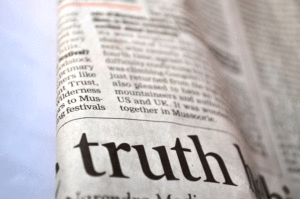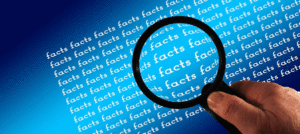The Trust Tsunami: Where Should You Get Your News?
Published on March 5, 2018, at 11:50 p.m.
by Skylar Spencer.

“If I had to pick one outlet to be stranded with on a desert island, I would pick The New York Times — they have solid journalism practices there,” Meredith Cummings said, a University of Alabama instructor in the Department of Journalism and Creative Media.
Where do you get your news? Where should you get your news? The line between where people are looking as opposed to where people should be looking is almost indefinable.
Why? The average person doesn’t know who or what to trust. According to the 2018 Edelman Trust Barometer, the media is now the least-trusted global institution for the first time in history, counteracting its earliest role — to serve as a “watchdog” for the public. Edelman’s study found that the absence of trust stems from a variety of factors: the inability to distinguish good journalism from bad, the widespread belief that the media is failing to meet societal expectations, and perhaps the broad, now widely accepted definition of the “news media.”
Interestingly enough, the news media isn’t the only institution hit by the “trust tsunami” — people are distrusting institutions as a whole and have been for the past 40 years. The rise of disinformation is conceivably the most cunning, however, because it undermines the very essence of rational, public discourse, warranting a thorough examination of how and why this phenomenon came to be.
Why does all of this matter to you? The public has since retreated into a constrained, self-curated information bubble, insulating themselves from anything that is disagreed upon. As students, industry professionals and consumers of media in general, we need to look deeper and ask ourselves how we got here.
The road to distrust.
The new digital landscape has had a pronounced effect on institutions across the board, and the media is no exception to the evolution’s uproar. The dawn of the World Wide Web has ushered in more information, more opinions, more everything — and most of it without filters. The result: a proliferation of information that may not be objective.

Keith Burton, a principal at Grayson Emmett Partners, explained that the emergence of social and digital has caused the once hard-hitting, objective reporting to be replaced by someone’s personal point of view, which may not always be impartial.
When considering whether it’s a matter of educating the public on how to be the objective news consumer, Burton noted a big concern for communication leaders today: What’s happened to public discourse in our world? Why can’t we be more objective with each other about the various points of view that we need to discuss?
“I think it does start with what we consume and what were willing to be open to,” Burton said. “And I just think in our world right now it’s a very unfortunate time where you look around and there’s not a great openness to either contrary or differing points of view on many subjects.”
While examining the road to distrust, consider how the newsgathering and reporting have changed — from the decrease in actual news, the substantial loss of paid reporters, the enrollment drop in journalism schools, the increase in opinion and commentary. Mix these road bumps together, and we see a relatively undifferentiated wash of stories and information.
Trust no one, but trust everyone?
When examining what outlets people are looking to for their news consumption, it may be worthwhile to consider what outlets people are not looking to instead. Despite the growing distrust, consumers are looking to any and everything, as a result of this extremely broad and fractured definition of the media.
Edelman’s Trust Barometer revealed that people agree that publishers and platforms — including social media and search engines — are part of “the media,” creating widespread confusion about the credibility of news. When bloggers become mistaken for journalists, a disruption in the nature of objective reporting is inevitable.
Cummings said she urges her students to refrain from even using the term “the media,” because it’s simply too broad. Cummings recently embarked on a 10,000-mile road trip chronicling American journalism, with the intent to show her students “that the media is people; we’re human beings.”
“We as journalists need to do a better job educating the media about how we operate — period. People don’t understand our system of checks and balances, and fact-checking, and how we don’t just put stuff out there that’s not true — we have a system, we have a code of ethics, we have ways we do this. So it’s up to journalists to educate people about that, not only be ethical in the way we’re practicing journalism, but to educate people about that,” said Cummings.
Navigating through the noise.
Where should you get your news? With more than 20 years of experience in print, web and multimedia reporting, Cummings said we need to be better consumers of the media. Cummings urges her students and others to “get out of that media bubble,” and purposefully explore other sources that you’re not used to, even if it means asking your worst enemy what he or she reads, and then reading it. Dr. Suzanne Horsley, a University of Alabama public relations professor, parallels this advice in a past Platform Magazine article, “Fake News and the Public Relations Industry.”
Likewise, Burton explained that there’s a potential danger in retreating to the news locations that favor our own points of view.
“When we are going to only those locations that favor the point of view that we have, we fail to get either a neutral or an understanding of a neutral point of view, don’t we?” Burton questioned. “We’re getting the information that we like — that sounds like our point of view, orientation, what were looking for — as opposed to trying to understand the world and all of the things going on around us in a more broad way.”
Expanding your news horizon is only a piece to the larger puzzle of navigating through the noise; consumers must be able to differentiate between credible and noncredible sources. When determining whether or not a source is trustworthy, Cummings said she first evaluates the money, the URL and the “About” section.
“I always tell my students to look at the money first,” Cummings said. “If you’re ever confused — who is funding this site? Who is funding this newspaper? Are there any conflicting business interests?”

Cummings mentioned her favorite phrase: “Be critical of the media you love.” She urged the public to take an extra two minutes to look at the “About” section, verify the link before pressing “Share,” verify everything.
One thing is clear in the midst of the disruption of community and trust: We, as consumers, need to break out of our media bubbles. Although we exist in a time overcome by diametrically opposed perspectives on the news today, we must dive into hard-hitting facts before we drown in the subjective personalities of the “news” being consumed. Let us immerse ourselves in the points of view of others, and work collectively — as consumers, businesses, the government and the media — to redirect the state and future of trust.




